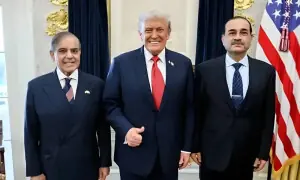Sugar: no reform, only noise
Local prices of sugar are once again making headlines, as prices charted fresh heights last week in cities of Sindh, KP, Balochistan, and certain parts of Punjab (esp. Faisalabad) as per PBS. Although a transient blip in sugar prices in the secondary market before the beginning of crushing season (mid to late November) is a regular – and perfectly normal – phenomenon, quantum of rise and politicization of commodity has brought things to a head.
Posterity will remember the incumbents for waging inquiries, committees, and investigations into the ‘causes of sugar price spiral’ for two long years, to little effect except nasty mudslinging. This may be the very last time when public discourse surrounding the industry offers a rare opportunity to kickstart substantial reform, before domestic supply stabilizes due to forecast of bumper crop. Thereafter, consumer prices shall settle down, and government can declare victory over unruly prices of the sweetener ‘for the good of common man’.
Don’t believe it? History has a nasty habit of repeating itself in Pakistan. In the first three of the last three electoral cycles, local prices of sugar increased by the highest quantum compared to all other major food commodities, irrespective of the global commodity price movements or exchange rate parity (whether fixed or market based).
Monthly retail price of sugar (CPI) increased by 242% between June 2008 and October 2011 after PPP came into power; by 34% percent between June 2013 and October 2016 during PML-N era; and by 195 percent between June 2018 and October 2021, after PTI took over. (N.B. of course, PML-N may claim that the quantum change during its reign was relatively much lower, but the rate of change in sugar price relative to all other food commodities remained abnormal in its period as well).
Why? The modus operandi remains identical each time. In the year leading up to every general election, the country records a bumper sugarcane crop and surplus supply of white refined sugar in the local market; during the election year, sugar mills delay crushing due to high carryover stock; government allows export to release pressure on domestic stocks; the twin signals of delayed crushing and exports leads to decline in cultivation; followed by up to two seasons of shortfall; later, governments raise support price to attract growers back to cane cultivation; and the cycle continues ad nauseum.
Of course, things can become markedly better or far worse depending upon various exogenous variables. Currency depreciation (2008-09; and 2018-19) can make sugar export much more attractive exaggerating effects of domestic shortfall. Similarly, global commodity price spiral (2009 and 2021) can lead to fiscal burden due to rise in cost of imports.
But it is clearly nothing that is unpredictable. Sugarcane crop is planted for up to 12 – 18 months. This means that robust crop surveys can give a fair forecast of area under cultivation (at assumed rates of productivity) to government departments beforehand, arguably long before it announces any export/import policy, or minimum support prices.
Yet, the surgical precision with which sugarcane crop follows the electoral cycle raises the suspicion that the mismanagement is no coincidence. Of course, one could blame commercial interests – sugar mills or large landholding farmers depending upon one’s analytical bias – for the vicious cycle, neither control the reigns of executive or legislative power. Those powers solely lay with the parliament, and specifically the ruling coalition, which can put them to good use by bringing meaningful reform to the rules of the game, rather than abuse it to play blame game and victimize opposition or erstwhile friends.
If sugar mills (including millers-cum-politicians) abuse the existing regulatory framework for their commercial gain at the expense of wider population, overhaul the regulation so they no longer be allowed to do so. If landed farmers (including landed-farmers-cum-politicians) exploit the rules to ceaselessly raise support prices, abolish it so the incentive for excessive cane cultivation is removed.
But what if it is those in power – every subsequent ruling regime including the head of governments – are also the ultimate beneficiary of this vicious cycle? What if it is not the farmers nor the millers, but rulers that hold vested commercial interest beholden to their cause – trading commercial benefits in exchange for political support in general elections? What incentive is there then to bring reform? Turn the populist understanding on its head, and the perfect alignment between electoral and sugar cycle may suddenly start making sense.
This article by BR Research first appeared in Business Recorder on Nov 8, 2021
For the latest news, follow us on Twitter @Aaj_Urdu. We are also on Facebook, Instagram and YouTube.





















Comments are closed on this story.